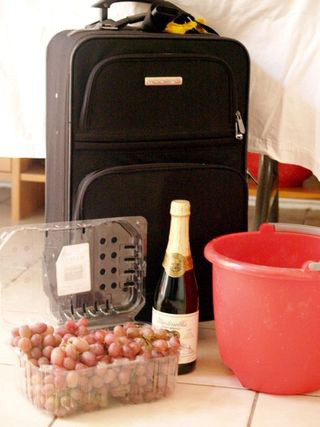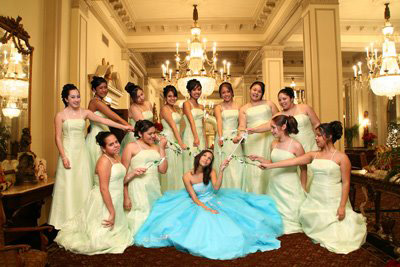 |
|
| |
| New Years in Cuba |
| For New Year’s Cuban’s exchange gifts and wishes between friends and family. Many Cubans like to celebrate the New Year's Eve at restaurants. New Year's Eve is brought to life through music, dancing, and a splash of quirky good luck rituals.
|
| A cherished tradition is to consume black-eyed peas. It is believed that black-eyed peas with rice and collard will usher in good luck and fortune to the family. Many people also believe to have something green to bring lots of money in the New Year |
 |
Having 12 grapes one for each month of the year in the New Years Eve night is customary to the Cuban people. This is also said to shower good luck and blessings to the household. |
|
| Another unique New Year tradition is to dress up and walk around the house on New Years Day carrying an empty suitcase. This believed to usher in frequent travels and tours in the ensuing year. |
| There is a family tradition to open both the front door and the back door at midnight of New Years Eve. The Back Door is left opened to Let out the Old Year and the Front Door is opened to welcome the New Year bringing good luck and cheer to the whole family. |
| |
| Cuban Wedding Traditions |
| Cuban wedding receptions are famous for their festivities. There is always lively music and dancing at a Cuban wedding. Wedding guests participate in the traditional money dance, where each man who dances with the new bride must pin money to her dress, to help the newlyweds with their honeymoon expenses. Along with receiving wedding presents, it is customary for the Cuban bride and groom to give each guest a favor, to remind them of this joyous occasion. |
 |
|
| |
| Cuban Religion |
| 47% of Cubans still considers themselves to be practicing Catholics. Besides its largely Catholic population, Cuba also has a small number of practicing Protestants (4%) and Santeria (2%). The rest of Cuba’s religion still retains deep with religious beliefs. |
| |
| La Quinceañea |
| The transition from childhood to womanhood is a significant passage for adolescent girls. In Cuba, it is marked with the celebration of the Quinceañea (15th Birthday). The celebration is a way to acknowledge that a young woman has reached sexual maturity and is thus of a marriageable age. |
 |
The most important component of the celebration is invariably a Misa de acción de gracias (thanksgiving Mass). Her parents and godparents accompany her during the mass services. If the girl chooses to have a court, she selects them among close family and friends. The court is to accompany during the whole celebration. |
|
| The celebration of the quinceañera remains as one of the rites of passage that keeps the bonds of the Mexican family firmly cemented. Its fancy frills and frosting abide as rich ingredients for a niña's sweet dreams. |
| |
| Traditional Christmas Food |
| Christmas is all about family. Traditionally, there is no Santa Clause in Cuba, hence, no gifts for children which is unfortunate for them, but that’s what traditions are all about, one has to stick to them whether one likes it or not. But there’s a lot of festivity in Cuba not only on Christmas. |
| Cuban Christmas can not be complete without a roasted pig. These roasted pigs are caught and killed only a couple of days before Christmas. Along with this main attraction, black and white beans and Cuban bread is quite popular on the eve of Christmas. Cubans can never forget to include a number of desserts in their Christmas menu. Wine and beer are used to add a touch of mischief. |
| All these preparations are supposed to be done on the 23rd which implies that the festivity goes on for days even before Christmas. These parties are never short of singing and dancing, so they do nothing but enjoy Christmas Eve. That’s just a glimpse of Christmas celebrations in Cuba, but, words can’t define how the whole thing looks in reality.
|



